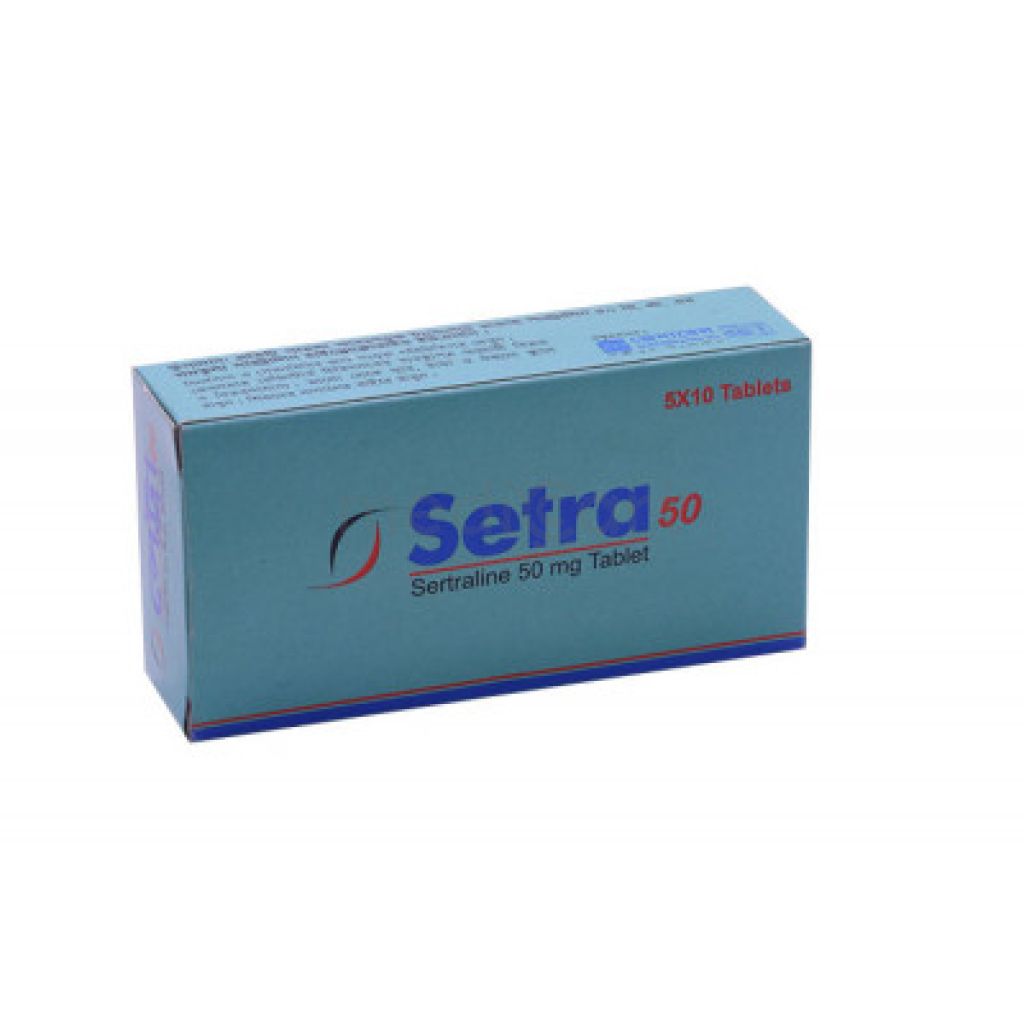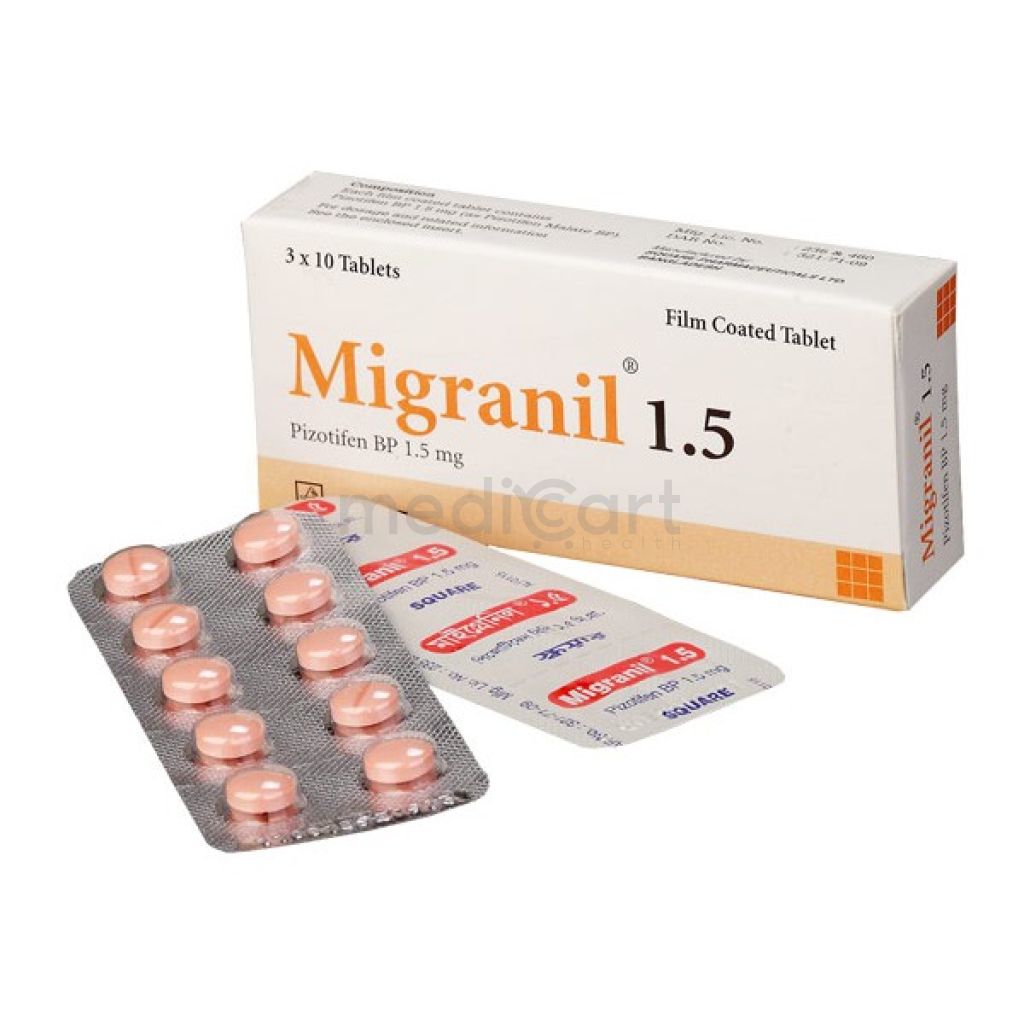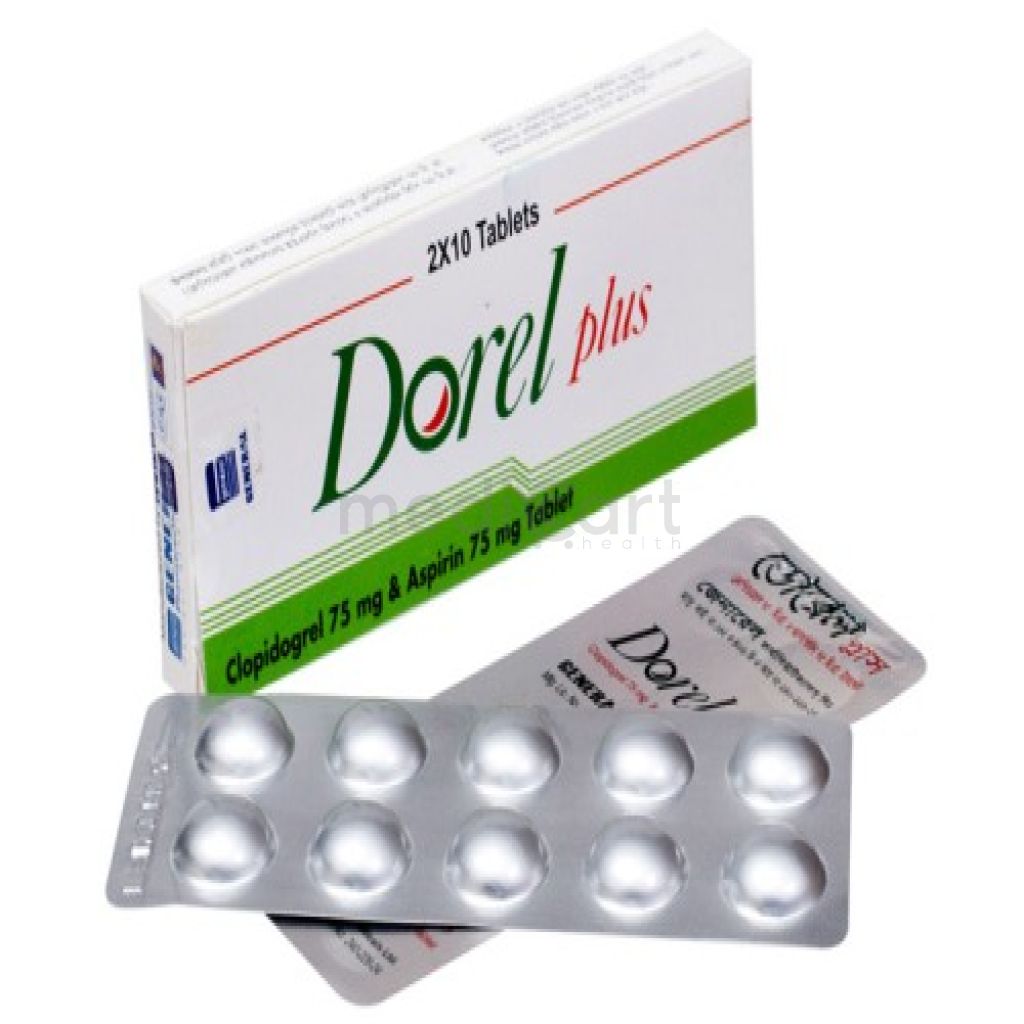

Setra - 50 mg
Tablet* Delivery will be done in Dhaka city only.
Alternative Product
More Information About - Setra - 50 mg
Description
Generic Name
Sertraline Hydrochloride
Precaution
Patient w/ family history of bipolar disorder, mania or hypomania; previous seizure disorder or condition predisposing to seizures (e.g. alcoholism, brain damage); angle-closure glaucoma or history of glaucoma; risk factors for uric acid nephropathy, QTc prolongation. Patient w/ concurrent systemic illness (e.g. conditions that affect metabolism or haemodynamic process). Avoid abrupt withdrawal. Renal and hepatic impairment. Childn. Pregnancy and lactation. Monitoring Parameters Monitor BMI (longitudinal monitoring), height, wt, unusual behavioural changes, signs and symptoms of serotonin syndrome. Lactation Distributed into milk; use caution (AAP states effect on nursing infants is unknown but may be of concern)
Indication
Major Depressive illness, Panic disorder, Premenstrual dysphoric disorder, Post-traumatic stress disorder, Obsessive-compulsive disorder, Social anxiety disorder
Contra Indication
Sertraline is contraindicated in patients with a known hypersensitivity to Sertraline or any of the excipients of drug. Concurrent use or w/in 14 days of discontinuation of MAOIs (e.g. linezolid or IV methylene blue). Concomitant use w/ pimozide.
Dose
N/A
Side Effect
>10% Diarrhea (13-24%),Nausea (13-30%),Headache (20-25%),Insomnia (12-28%),Ejaculation disorder (7-19%),Dizziness (6-17%),Dry mouth (6-16%),Fatigue (10-16%),Drowsiness (2-15%) 1-10% Agitation (1-6%),Anorexia (5-10%),Anxiety (4%),Constipation (5-8%),Paresthesia (2%),Impotence (5-10%),Sweating (< 1%),Malaise (7-9%),Vomiting (4%),Pain (3-6%) Frequency Not Defined Asthenia,Back pain,Chest pain,Hypoesthesia,Increased appetite,Myalgia,Palpitations,Rhinitis,Tinnitus,Weight gain,Yawning
Pregnancy Category
Name : C
Description
Animal reproduction studies have shown an adverse effect on the fetus and there are no adequate and well-controlled studies in humans, but potential benefits may warrant use of the drug in pregnant women despite potential risksMode of Action
Sertraline has a potent and selective inhibitory action on CNS neuronal reuptake of 5-HT resulting in increased 5-HT concentrations at the synaptic clefts, leading to sustained activity at the postsynaptic receptor sites and improvement of depression. Reduction of serotonin turnover (in brain) also contributes to its action. Its long half-life allows once daily admin.
Interaction
May increase risk of delirium when used with antimuscarinics. Increased risk of extrapyramidal symptoms and neuroleptic malignant syndrome when used with aripiprazole. Serum levels may be reduced by carbamazepine. Concurrent use with dihydroergotamine or linezolid may lead to serotonin syndrome. May increase serum levels of lamotrigine and risk of toxicity. May increase serum levels of olanzapine, pimozide, risperidone, methadone, clozapine and amiodarone. Plasma levels may be increased by cimetidine and ritonavir. May increase the anticoagulant activity of warfarin and acenocoumarol. Potentially Fatal: Concomitant admin with MAOIs can result in serious serotonin syndrome.
Pregnancy Category Note
Pregnancy category: C Use late in the third trimester associated with complications in newborns and may require prolonged hospitalization, respiratory support, and tube feeding Persistent pulmonary hypertension of the newborn Potential risk of persistent pulmonary hypertension of the newborn (PPHN) when used during pregnancy Initial public health advisory in 2006 was based on a single published study; since then, there have been conflicting findings from new studies, making it unclear whether use of SSRIs during pregnancy can cause PPHN FDA has reviewed the additional new study results and has concluded that, given the conflicting results from different studies, it is premature to reach any conclusion about a possible link between SSRI use in pregnancy and PPHN FDA recommendation: FDA advises healthcare professionals not to alter their current clinical practice of treating depression during pregnancy and to report any adverse events to the FDA MedWatch program A meta-analysis of 7 observational studies, found exposure to SSRIs in late pregnancy (ie, >20 weeks' gestation) more than doubled the risk of PPHN that could not be explained by other etiologies (eg, congenital malformations, meconium aspiration) (BMJ 2014;348:f6932) Lactation Distributed into milk; use caution (AAP states effect on nursing infants is unknown but may be of concern)
Adult Dose
Oral Major Depressive Disorder; Obsessive compulsive disorder Adult: Initially, 50 mg daily, may increase in increments of 50 mg at wkly intervals. Max: 200 mg daily. Panic disorder with or without agoraphobia; Posttraumatic stress disorder; Social anxiety disorder Adult: Initially, 25 mg daily, increased to 50 mg daily after a wk. May increase in increments of 50 mg at wkly intervals. Max: 200 mg daily. Premenstrual dysphoric disorder Adult: Initially, 50 mg daily, either throughout the menstrual cycle or during the luteal phase only. May increase in increments of 50 mg per menstrual cycle. Max: 150 mg daily (for continuous dosing) or 100 mg daily (during luteal phase). Patient who require 100 mg daily during luteal phase-only: Initially, 50 mg daily for the first 3 days of each luteal phase period. Hepatic impairment: Reduce dose.
Child Dose
Oral Obsessive compulsive disorder Child: 6-12 yr Initially, 25 mg once daily; 13-17 yr Initially, 50 mg once daily. May increase at intervals of at least 1 wk. Max: 200 mg daily.
Renal Dose
Renal impairment: Dose adjustment not necessary
Administration
May be taken with or without food.
Disclaimer
The information provided herein are for informational purposes only and not intended to be a substitute for professional medical advice, diagnosis, or treatment. Please note that this information should not be treated as a replacement for physical medical consultation or advice. Great effort has been placed to provide accurate and comprehensive data. However, Medicart along with its authors and editors make no representations or warranties and specifically disclaim all liability for any medical information provided on the site. The absence of any information and/or warning to any drug shall not be considered and assumed as an implied assurance of the Company.










